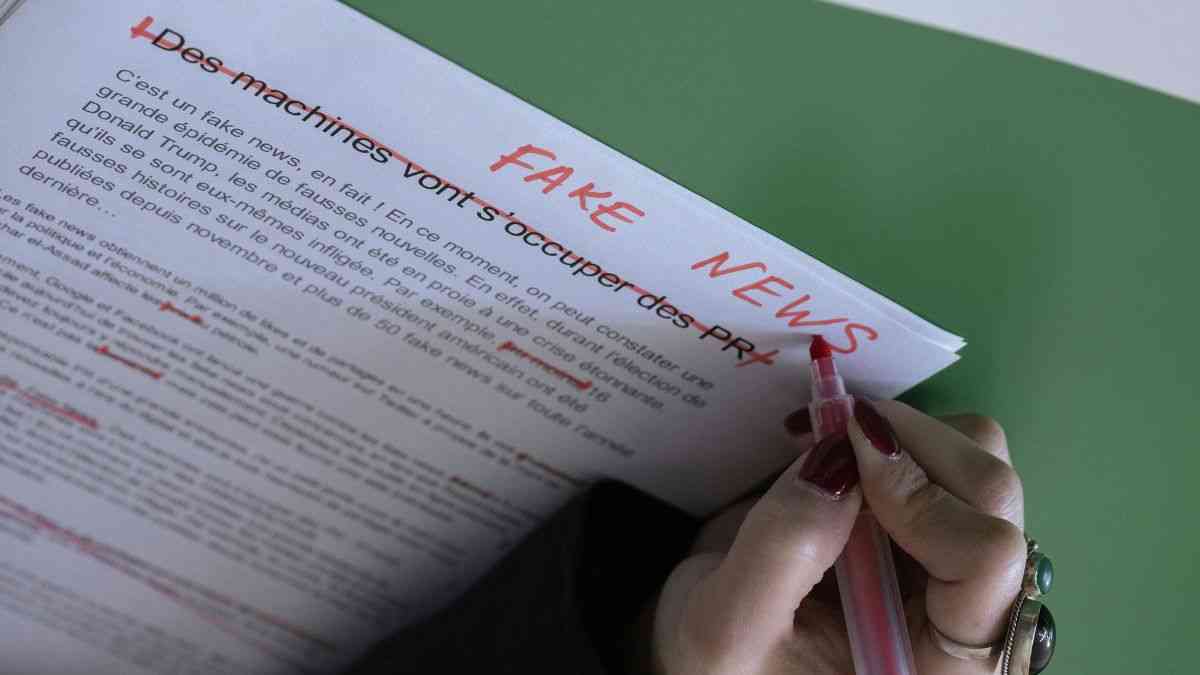Truth & Goodness
Scare, Divide, and Conquer: The Oldest Weapon in Politics
07 January 2026

No more falling for fake news. British and German scientists have just discovered a brilliantly simple method that allows anyone to instantly recognize falsehoods online. The secret? "Actively open-minded thinking"—a technique that protects against manipulation without complex analysis or reliance on intuition. This isn't another fact-checking app. It's a revolutionary change in approach to every piece of information you see online. And the best part—it works instantly and is completely free.
Why do some people spot fake news right away, while others fall for it? Scientists have just found the answer—and it could completely change the way you surf the internet.
In an age of disinformation, recognizing lies online is difficult. But some people have a superpower for it. What sets them apart? The key lies in “Actively Open-Minded Thinking” (AOT).
Can resilience to fake news be taught? British and German researchers decided to find out, and the results of their experiment may revolutionize the fight against disinformation.
The scientists focused on information flattening—a major reason why people swallow lies online. Based on the AOT method, they created a special warning message.
Its purpose? To protect people from the psychological traps they fall into due to a lack of actively open-minded thinking.
Can a single short message protect you from fake news? Scientists decided to test this in two precise experiments. They divided participants into two groups. The experimental group received a short educational message—a warning against the psychological traps people fall into when they don’t use actively open-minded thinking. The control group? They received no warning. In Experiment 2, control group participants were given a task that involved neutral word-sorting.
Afterward, all participants completed several questionnaires. They were assessed on:
Participants rated the truthfulness of information and indicated whether they would be willing to share it online. The results are promising.
You might like to read: Big Media No Longer Inspire Trust. They are Now Shaping Opinion
It turned out that the participants who received the warning message had higher scores in actively open-minded thinking than those in the control group. In the first study, the experimental group was better at distinguishing between real and fake news. They were less willing to share fake news, and in most cases, the participants in this group did not believe in conspiracy theories.
In the second study, participants in the experimental group were also more accurate in distinguishing between true and false information, although their belief in conspiracy theories decreased only slightly.
“In both studies, AOT was consistently improved, which in turn decreased susceptibility to disinformation, belief in conspiracy theories (studies 1 and 2), and improved content-sharing decisions (study 1). Furthermore, the benefits of improving AOT occurred even when accounting for the apparent components of this thinking style,” the study from the Journal of Experimental Social Psychology reads.
And here’s the biggest surprise. The analysis showed that people didn’t become suspicious of everything—they just started to think smarter. Participants learned to better analyze evidence and look at every piece of information from multiple angles at once. That’s why they were so effective at recognizing manipulation.
So it’s not about distrust—it’s about a more thoughtful approach to what we see online.
Although participants did indeed think more logically and reflectively, that alone did not explain their superpower in recognizing fake news.
The real game-changer turned out to be actively open-minded thinking—it had a decisive influence on everything: better lie recognition, resilience to conspiracy theories, and caution in sharing content.
What is this thinking style all about?
Sounds simple? Because it is simple. And at the same time, it has revolutionary effects.
Polish version: Tak rozpoznasz fake newsy. Prosty sposób daje wysoką skuteczność


Science
06 January 2026

Zmień tryb na ciemny